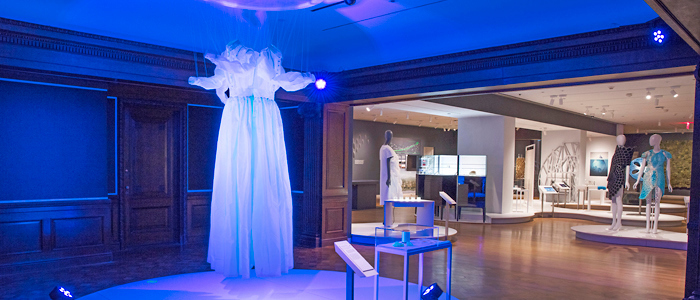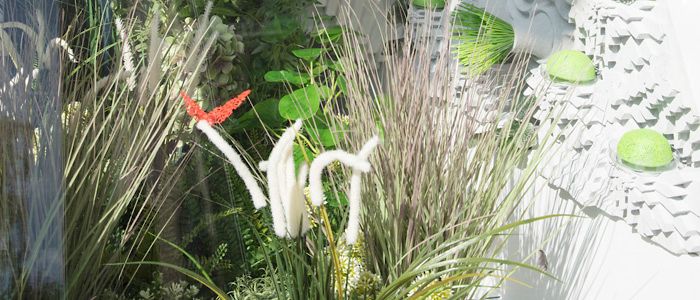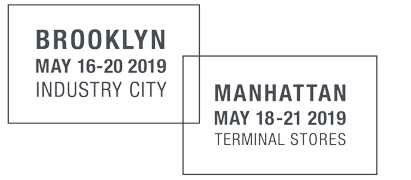How Designers are Reimagining Humanity’s Relationship with Nature
Curiosity Cloud designed by mischer’traxler studio on view in Nature—Cooper Hewitt Design Triennial. Photo by Scott Rudd.

In Nature—Cooper Hewitt Design Triennial, the new exhibition at Cooper Hewitt, Smithsonian Design Museum, a sound like the plinking of raindrops greets visitors as they immerse themselves within Curiosity Cloud. Designed by mischer’traxler studio, the installation features a curtain of oversized incandescent lightbulbs that illuminate as visitors investigate the lifelike robotic insects flitting within.
Curiosity Cloud is not only a joy to experience, but also a thought-provoking meditation on biodiversity. The insects that the designers emulated are species that are either native or invasive to New York, and the delicate glass bulbs that hold them suggest the fragility of our ecosystems. It is one of 62 works by international designers and design teams featured in the Design Triennial, co-organized with Cube design museum in Kerkrade, Netherlands. In a first for Cooper Hewitt, the exhibition is presented simultaneously on both sides of the Atlantic.

Installation view of Nature—Cooper Hewitt Design Triennial. Photo by Matt Flynn © Smithsonian Institution.
The projects in the Design Triennial range from the speculative to the practical. Only the most daring fashion plates might don Fantasma by AnotherFarm, a spectral, three-headed prairie dress woven from glowing silk made by injecting silkworm eggs with coral DNA. But artists around the world have already adopted AIR-INK, the first marker to transform pollution into a pigment. Anirudh Sharma, co-founder of Graviky Labs, spearheaded the project, which is sold at the museum’s gift shop.

View of Monarch Sanctuary designed by Terreform ONE on view in Nature—Cooper Hewitt Design Triennial. Photo by Matt Flynn © Smithsonian Institution.
Monarch Sanctuary, a full-scale model developed by the architecture studio Terreform ONE, exemplifies the exhibition’s sense of optimism. Ultra-sleek in its design and made using 3-D printed molds, the project proposes transforming the facades of commercial buildings in Nolita into vertical refuges for the at-risk butterfly. Nature—Cooper Hewitt Design Triennial inspires hope that, through international and cross-disciplinary collaboration, scientists, engineers, environmentalists, and scholars may realign human activity with the laws of nature.
Nature—Cooper Hewitt Design Triennial is now on view at Cooper Hewitt, Smithsonian Design Museum, 2 E 91st St, New York, NY.

